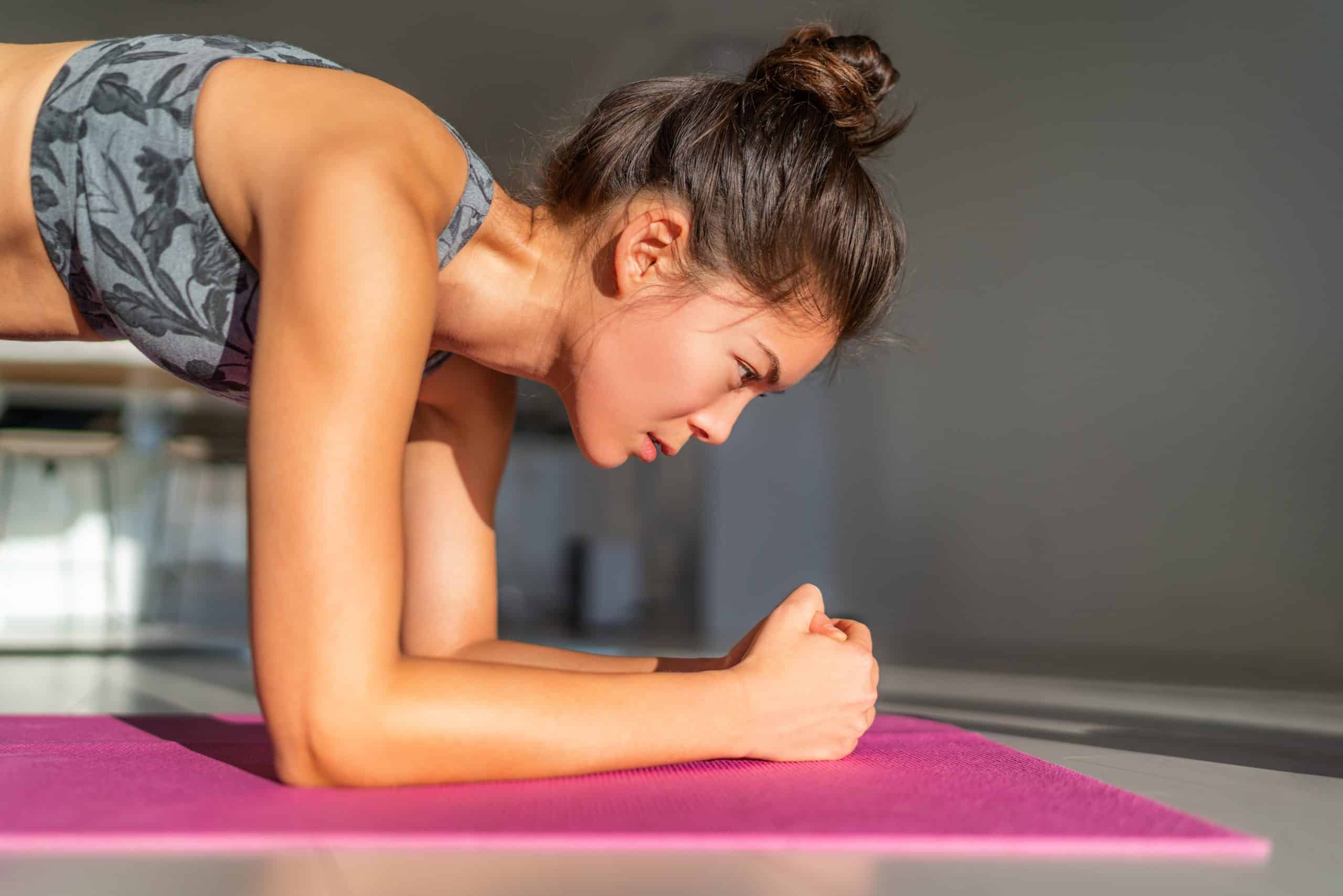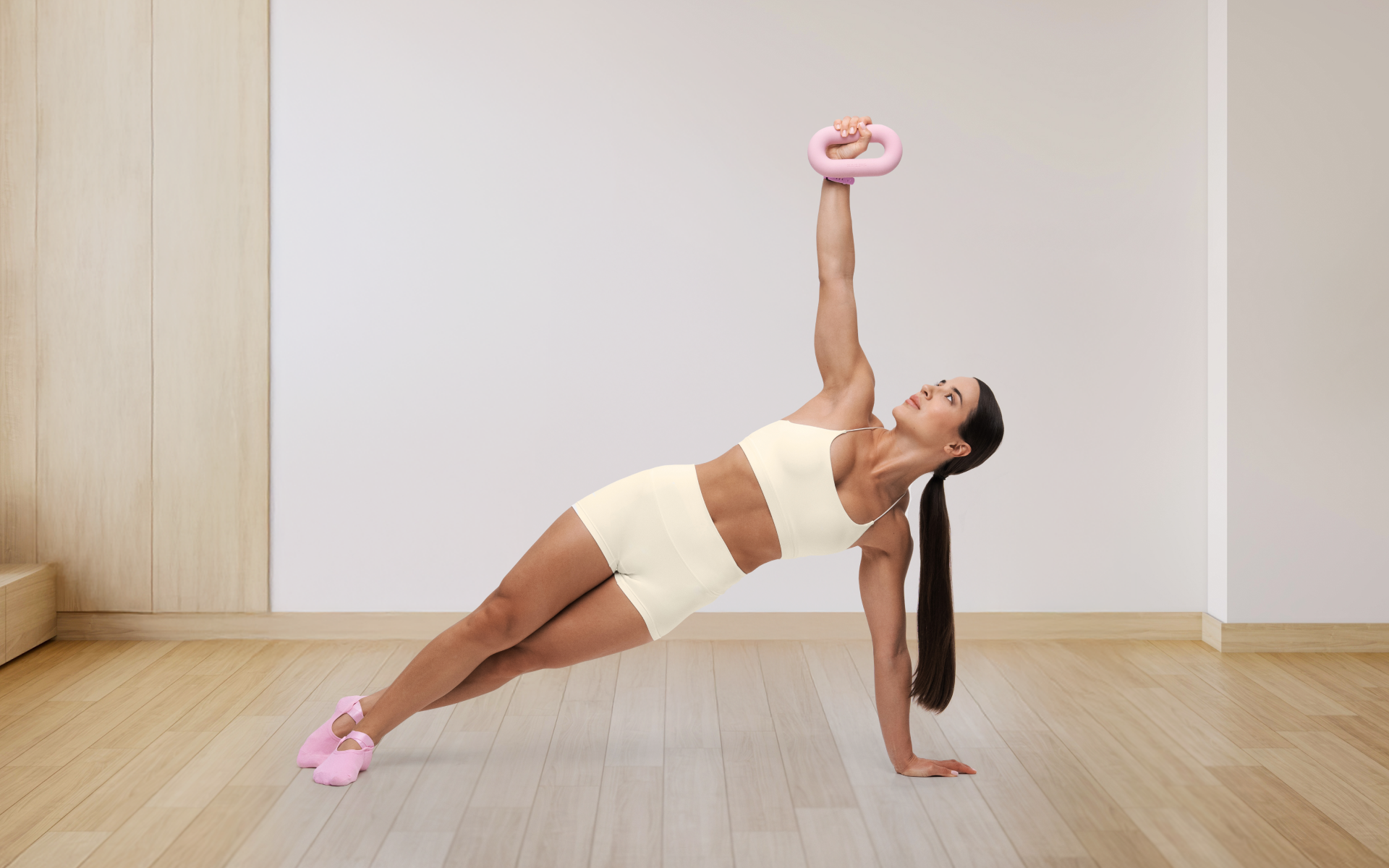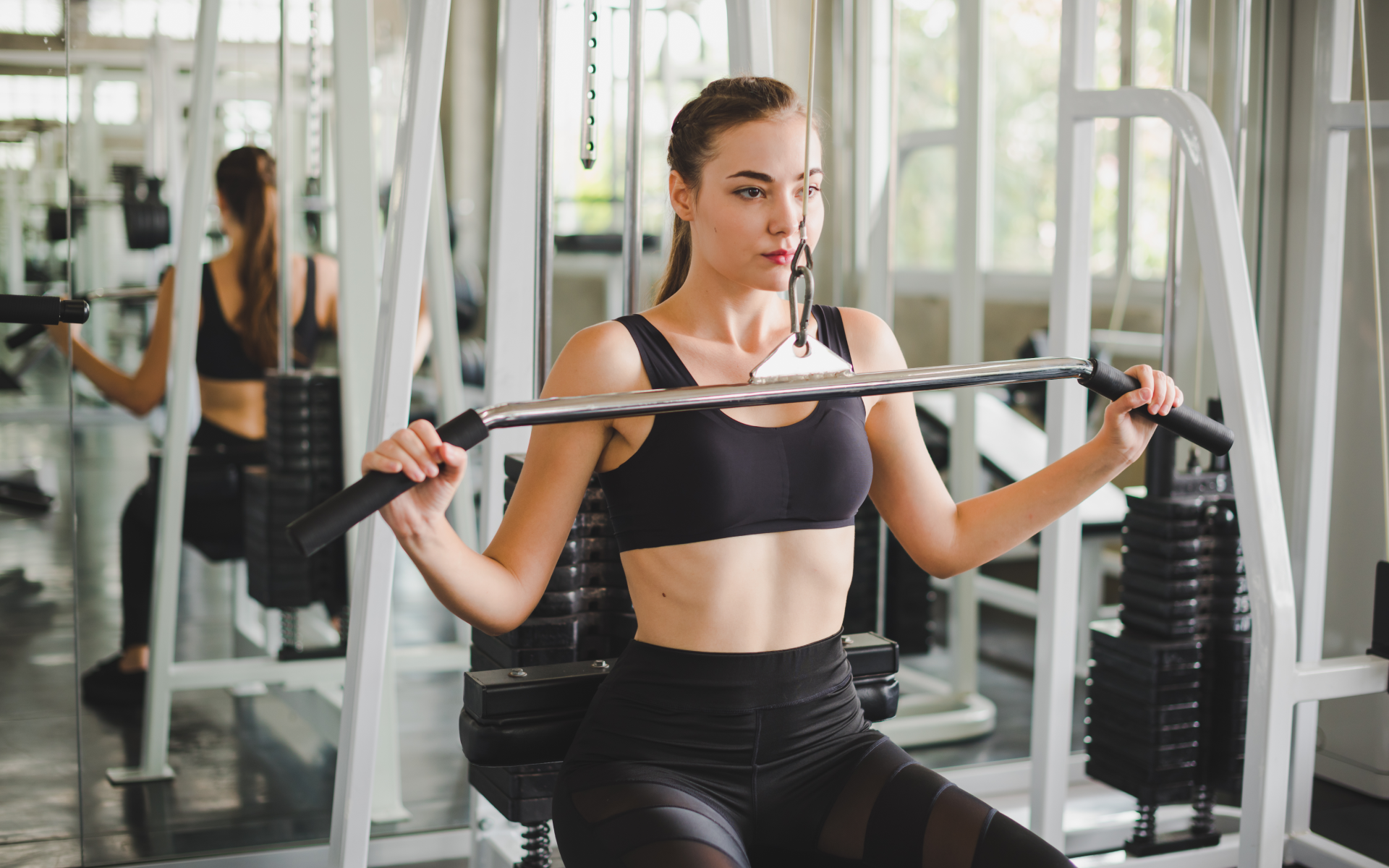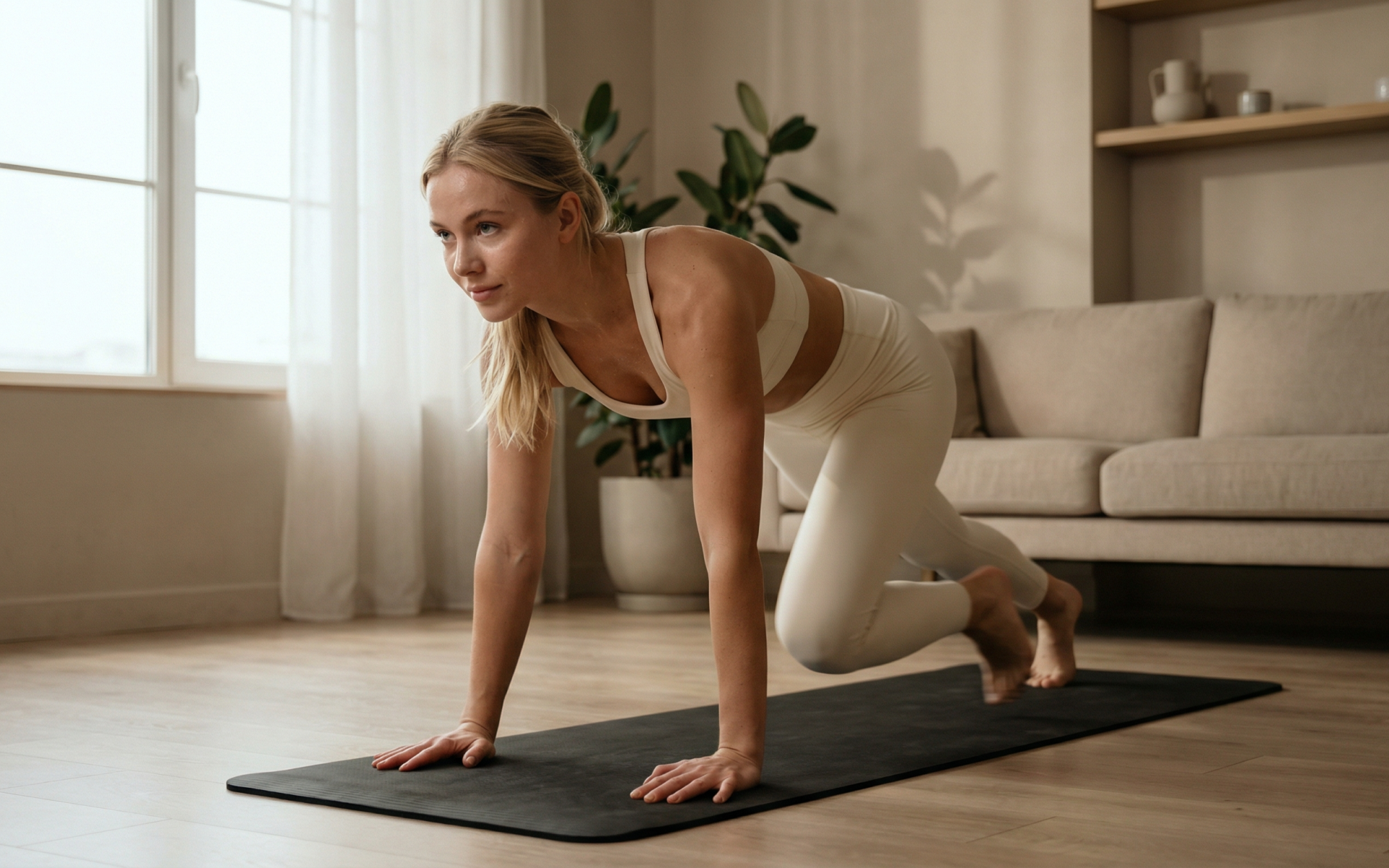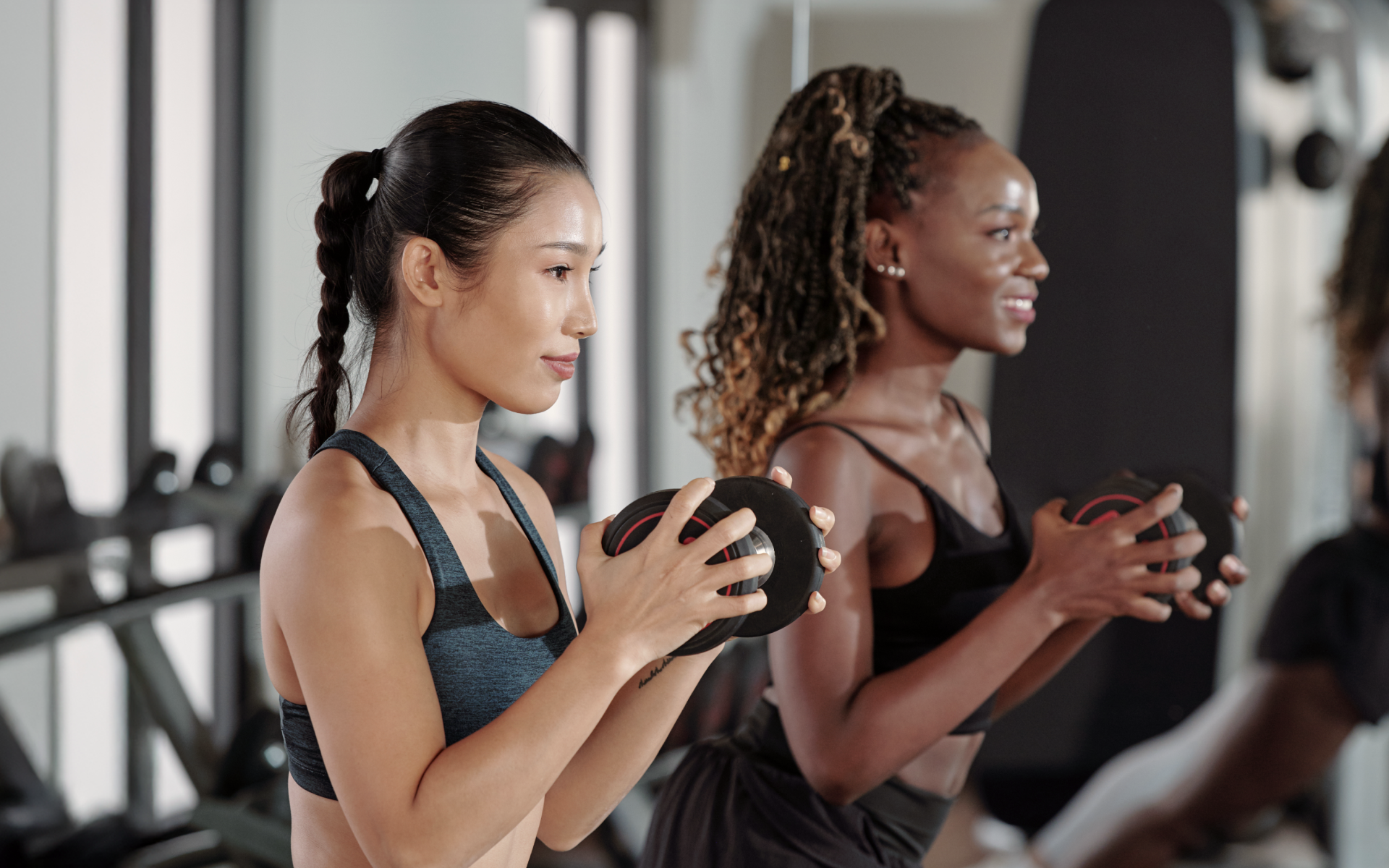Many believe that the shoulder region is difficult to target without heavy weights or specialized equipment, but this is not entirely true. Since the shoulder is a highly mobile and complex joint, it can benefit significantly from exercises that require no equipment at all.
A bodyweight shoulder workout not only improves strength and stability but also reduces the risk of injury by reinforcing the supporting muscles and tendons. By focusing on movements that engage the entire shoulder girdle, you can develop a powerful physique.
Let’s explore the advantages and limitations of bodyweight shoulder workouts. Here, we’ll discuss which exercises are most effective for developing shoulder strength and definition. We’ll also touch on how to incorporate these exercises into a comprehensive fitness routine.
Can You Get Big Shoulders Without Weights?
Yes, you can perform bodyweight shoulder workouts for mass gains. “Big shoulders” mostly refers to the development of the deltoid muscles, which primarily consists of three heads – anterior (front), medial (middle), and posterior (rear) (2).
These muscles work together to raise your arm in various directions. By targeting all three heads with bodyweight exercises, you can achieve significant muscle growth in your shoulders.
Let’s review the science behind muscle growth.
Muscle growth, or hypertrophy, occurs through a combination of muscle tension, muscle damage, and metabolic stress (7).
Muscle Tension and Damage
When you engage in physical activity that places your muscles under tension—like when executing bodyweight exercises for your shoulders—tiny tears occur within the muscle fibers.
That might sound concerning, but it’s actually a good thing. This damage acts as a trigger for muscle repair and growth during the recovery phase. Your body repairs these micro-tears by fusing muscle fibers together, which increases the mass and size of your muscles (3).
Metabolic Stress
Effective muscle growth isn’t just about lifting heavy weights. Metabolic stress, characterized by the burning sensation you feel during intense parts of your workout, contributes to muscle hypertrophy, without the need for equipment.
The accumulation of lactic acid and other metabolites (byproducts of exercise) causes cellular swelling, which signals your body to ramp up protein synthesis and enhance muscle growth (5). Bodyweight exercises that target the shoulder muscles can create significant metabolic stress and lead to muscle hypertrophy.
Progressive Overload
Setting the stage for continuous muscle growth requires progressive overload, which involves gradually increasing the stress placed on your muscles over time (4). As you gain strength, you will require a greater load to achieve the same results you did at lower weights when you were just starting out.
With bodyweight shoulder exercises this can be achieved by progressively adding more reps, sets, or incorporating more challenging variations of a particular exercise.
In a previous blog titled, Calisthenics for Shoulders, we discussed how to progressively overload with dips, push-ups, and pull-ups.
Pros and Cons of Bodyweight Shoulder Workouts
As with any type of training, there are pros and cons to consider when incorporating bodyweight exercises into your shoulder routine.
Pros
Convenience and Cost-Effective
One of the significant benefits of a bodyweight shoulder workout is that it can be done anywhere – at home, in a park, or on vacation. You don’t need any specialized equipment, making it a highly cost-effective option (6).
Improved Stability and Mobility
Since bodyweight exercises require you to stabilize your own body weight, they also improve the overall stability of the shoulder joint. In addition, bodyweight exercises for the shoulder can be tailored to incorporate numerous joint positions and range of motion requirements. This variability can create positive effects on overall joint mobility. This can help prevent injuries and improve performance in other exercises or daily activities.
Variety of Movements
With bodyweight shoulder exercises, there is an endless variety of movements and variations that can target different areas of the shoulder girdle (6). This allows for a well-rounded workout and prevents boredom.
Cons
Limitations on Resistance
The primary limitation of bodyweight shoulder exercises is that it can be challenging to increase resistance once you have become proficient in a particular exercise. Without adding external weight, you may not see continued muscle growth or strength gains.
Difficulty with Isolation
While bodyweight exercises can target multiple muscles in the shoulder girdle, they are not as effective at isolating specific muscle groups, compared to using weights or machines.
BetterMe is your fast-track ticket to a long-lasting weight loss! Tailor your fitness journey and maximize your results with just a couple of swipes!
Are 3 Exercises for Shoulders Enough?
You can achieve significant shoulder muscle growth with just three exercises. These include:
- Pike Push-Ups
- Handstand Push-Ups
- Pull-Up Variations
Let’s take a closer look at each of these exercises and how they target the different heads of the deltoid muscles.
Pike Push-Ups
Pike push-ups primarily work the anterior (front) head of the deltoids, along with the pectoralis major and triceps. It’s a great exercise for building strong shoulders, especially if you’re new to bodyweight training.
To perform a pike push-up:
- Start in a push-up position with your feet shoulder-width apart and your hands placed on the ground slightly wider than shoulder-width apart.
- Walk your feet towards your hands, elevating your hips and forming an inverted “V” shape with your body.
- Slowly lower yourself towards the ground while keeping your elbows close to your sides.
- Push back up to the starting position.
To make this exercise more challenging, you can elevate your feet on a box or sturdy surface or incorporate pauses at the bottom of the movement.
Handstand Push-Ups
Handstand push-ups target the medial (middle) head of the deltoids, along with the triceps and upper chest muscles. They require a good amount of core strength and balance, making them an effective full-body exercise.
To perform a handstand push-up:
- Begin in a wall-facing handstand position with your hands shoulder-width apart and your feet against a wall for support.
- Slowly lower yourself towards the ground, keeping your comfortably flared.
- Push back up to the starting position.
To increase the difficulty of this exercise, you can gradually move your hands closer to the wall or incorporate pauses at different points in the movement.
Pull-Up Variations
Pull-ups target the posterior (rear) head of the deltoids, along with the back muscles (lats) and biceps. They are a challenging but effective exercise for developing overall shoulder strength and stability.
To perform a pull-up:
- Start by hanging from a bar with your hands slightly wider than shoulder-width apart and your palms facing away from you.
- Engage your back muscles and pull yourself up towards the bar until your chin is above it.
- Slowly lower yourself back down to the starting position.
To add more challenge, you can use a wide grip, incorporate pauses at certain points in the movement, or perform pull-ups with just one arm (if you have sufficient strength and experience).
Explore more shoulder-specific workouts in our previous blog – Calisthenics Shoulder Exercises.
The Best Bodyweight Shoulder Exercises for Beginners
The three exercises we’ve discussed so far can all be modified to suit beginners. However, if you’re just starting with bodyweight training or have limited upper body strength, you may need to begin with even more beginner-friendly exercises.
Here are three bodyweight shoulder exercises that are great for beginners:
- Incline Push Ups
- Shoulder Taps
- Bear Crawls
- Wall Walks
- Plank Walks
- Superman (I, Y & T)
Incline Push Ups
Incline push-ups are a great way to build strength and stability in your shoulders while also targeting the chest muscles. Specifically, they target the anterior (front) head of the deltoids. They also allow for an easier range of motion compared to standard push-ups, making them perfect for beginners.
To perform an incline push-up:
- Find a stable elevated surface, such as a bench or staircase.
- Place your hands on the edge of the surface slightly wider than shoulder-width apart.
- Step back and assume a plank position with your arms straight and your body in a straight line from head to heels.
- Slowly lower yourself towards the surface, keeping your elbows close to your sides. Keeping your elbows close to your sides will ensure the anterior deltoids are the primary mover of the exercise while allowing your elbows to flare a bit will allow the upper pectoralis musculature to provide a greater assist. Choose your elbow position based on your goals!
- Push back up to the starting position.
Read more: Calisthenics Warm Up 101: Bodyweight Exercises To Get Your Blood Flowing Before Your Workout
Shoulder Taps
Shoulder taps target the medial (middle) and anterior (front) heads of the deltoids and require a significant amount of core stability. They can also help improve shoulder stability. Beginners can modify this exercise by performing it on their knees instead of in a plank position. Progressing to a full plank position will make the exercise more challenging.
To perform shoulder taps:
- Begin in a plank position with your arms straight and your body in a straight line from head to heels.
- While keeping your core engaged and hips stable, lift one hand and touch it to the opposite shoulder.
- Place the hand back down, then repeat on the other side.
Bear Crawls
Bear crawls target the posterior (rear) head of the deltoids, along with the back muscles and core. They are a great exercise for total body strength and stability. You may find it helpful to begin with shorter distances and gradually increase as you gain strength and endurance.
To perform bear crawls:
- Begin on your hands and knees with your hands shoulder-width apart and your knees hip-width apart.
- Lift your knees off the ground, keeping them bent at a 90-degree angle.
- Crawl forward by taking short steps with your hands and feet.
- Keep your core engaged and maintain a stable, neutral spine throughout the movement.
Wall Walks
Wall walks are an excellent exercise for enhancing shoulder strength, core stability, and overall body control. This exercise targets multiple shoulder muscle groups, including the anterior, medial, and posterior deltoids, making it a comprehensive upper-body workout. It also engages the core and back muscles extensively.
To perform wall walks:
- Start in a push-up position with your feet against a wall.
- Walk your feet up the wall while simultaneously walking your hands toward the wall.
- Continue walking up the wall until you are as close to the wall as you can get without losing your balance or until your chest touches the wall, keeping your body straight.
- Walk back down to the starting position in a controlled manner.
Wall walks are particularly effective for building the strength and stability required for more advanced handstand and shoulder exercises.
If you’ve mustered up the courage to crush your weight loss goal, let Betterme take the sting out of this demanding process. Our app will help you restructure your habits, remold your life and crank up your fitness results!
Plank Walks
Plank walks are a dynamic exercise that targets the core, shoulders, and arms, promoting strength and stability across these areas. This exercise not only works the shoulders but also improves core engagement and balance.
To perform plank walks:
- Begin in a standard plank position with your arms extended and your body in a straight line.
- Move your right hand to the right side, followed by your left hand moving in the same direction, entering a wider stance with your feet if needed for balance.
- Then, move your left hand back to the starting position, followed by your right hand, returning to the original plank stance.
- Repeat the movement in the opposite direction.
This exercise can be varied in speed to increase intensity and is excellent for building endurance and stability in the shoulder muscles.
Read more: 30-Minute Bodyweight Beach Workout for Beginners
Superman (I, Y & T)
The Superman exercise, specifically with the I, Y, and T variations, is beneficial for strengthening the entire back, including the rear deltoids, which are crucial for complete shoulder development. These variations target different aspects of the back and shoulders, promoting balanced strength and posture.
To perform Superman I, Y, and T:
- I: Lie face down on the floor, arms extended straight out above your head. Lift your arms and legs off the ground, forming a straight line from your feet to your hands, resembling the letter “I”. Hold for 3 seconds. Lower back down.
- Y: Start in the same position, but angle your arms outwards to form a “Y” shape. Lift your arms and legs off the ground, hold, and then lower.
- T: Begin face down, arms extended out to the sides to form a “T” with your body. Lift your arms and legs, hold for a moment, and then lower.
These variations increase posterior shoulder and back strength, which is crucial for maintaining proper posture and reducing the risk of shoulder injuries.
Check out our Shoulder Workout Calisthenics blog for more shoulder exercises and tips.
FAQs
How Do You Train Bodyweight Traps?
Your trapezius muscles are located in the upper back and neck area (1). Some bodyweight exercises that target the traps include:
- Inverted Rows (also referred to as bodyweight rows)
- Pull-Ups
- Superman T
Inverted Rows
To perform inverted rows:
- Find a sturdy, elevated surface such as a bar or table.
- Lie underneath the bar with your arms extended, palms facing away from you, and your legs straight out in front of you.
- Pull yourself up towards the bar, keeping your elbows close to your sides and squeezing your shoulder blades together. Make sure to keep your core and glutes engaged so your body stays in a straight line throughout the movement.
- Slowly lower yourself back down to the starting position.
Pull-Ups
To perform pull-ups:
- Find a sturdy bar that you can hang from with an overhand grip (palms facing away).
- Hang from the bar with your arms fully extended and your feet off the ground.
- Pull yourself up towards the bar, keeping your elbows close to your sides and squeezing your shoulder blades together.
- Slowly lower yourself back down to the starting position.
Superman T
To perform Superman T:
- Lie face down on the ground with your arms extended straight out to the sides, forming a “T”.
- Lift your chest and arms off the ground while contracting your back muscles.
- Hold for a moment, then slowly lower back down to the starting position.
What Is a Bodyweight Shoulder Press?
A bodyweight shoulder press is an exercise that targets the anterior (front) deltoids and other shoulder muscles. It involves pressing your arms overhead with resistance from your own body weight.
To perform a bodyweight shoulder press:
- Begin in a plank position with your hands directly under your shoulders and feet hip-width apart.
- Lower yourself down to the forearm plank by bending your elbows and resting on your forearms.
- Push back up to a high plank by straightening your arms.
- Next, walk your hands towards your feet, keeping your legs straight, until you are in a pike position with your hips raised and hands flat on the ground.
- Lower yourself back down to the forearm plank, then push back up to the high plank.
- Repeat this movement for the desired number of reps.
This exercise engages not only the shoulders but also the core, chest, and triceps muscles.
Is It Ok To Train Shoulders Every Day?
It is not recommended to train the same muscle group every day, including the shoulders. Rest and recovery are essential for muscle growth and development (8). It is best to give large muscle groups at least 24-48 hours of rest after a challenging workout before working them again.
However, you can incorporate shoulder exercises into a full-body workout routine by alternating between upper-body and lower-body days or adding in a few shoulder-focused exercises on non-shoulder days.
Are 3 Exercises Too Little?
Three exercises can be enough if you are performing them with proper form, intensity, volume, and variation. However, if you feel like you need more variety or want to challenge yourself further, you can always add in more exercises or increase the difficulty of the ones you are already doing.
The number of exercises is not as crucial as the overall exercise volume paired with the quality and effort put into each movement. So, focus on performing each exercise correctly and pushing yourself.
Are 3 Bicep Exercises Too Much?
Depending on the structure of your workout plan, three bicep exercises may or may not be too much for a single workout. Typically, three bicep exercises in a single workout is unnecessary when performing high intensity compound pulling exercises (such as pull ups, chin ups, and any type of row variation) because these exercises already heavily involve the biceps. Therefore, isolated bicep exercises should not be a primary focus and should typically be prioritized after the completion of the larger compound exercises. Others prefer a dedicated “arm day” in their training split and three dedicated bicep exercises may be just fine as long as they are not performing other higher-intensity compound exercises in addition. Again, the quality of the exercises and how you perform them is often more important than the quantity.
If you feel like you are not getting enough stimulation from three exercises, consider adding in a few more or increasing the intensity through weights or variations.
Is Shoulder Day Necessary?
Having a designated shoulder day in your workout routine is not necessary, but it can be beneficial. If you are incorporating compound movements that engage multiple muscle groups, such as push-ups and pull-ups, into your regular workouts, you may not need an entire day dedicated to shoulders.
However, if you want to focus on building strength and size in your shoulders or have specific injuries or imbalances that need attention, having a shoulder day can be helpful. Just make sure to give your muscles enough rest and recovery time in between workouts.
The Bottom Line
Incorporating bodyweight exercises into your workout routine is an effective way to strengthen and tone your shoulders without the use of weights or equipment. By targeting multiple muscle groups and incorporating variations, you can create a challenging and well-rounded shoulder workout.
Remember to always prioritize proper form, listen to your body, and be consistent in your training for the best results.
DISCLAIMER:
This article is intended for general informational purposes only and does not serve to address individual circumstances. It is not a substitute for professional advice or help and should not be relied on for making any kind of decision-making. Any action taken as a direct or indirect result of the information in this article is entirely at your own risk and is your sole responsibility.
BetterMe, its content staff, and its medical advisors accept no responsibility for inaccuracies, errors, misstatements, inconsistencies, or omissions and specifically disclaim any liability, loss or risk, personal, professional or otherwise, which may be incurred as a consequence, directly or indirectly, of the use and/or application of any content.
You should always seek the advice of your physician or other qualified health provider with any questions you may have regarding a medical condition or your specific situation. Never disregard professional medical advice or delay seeking it because of BetterMe content. If you suspect or think you may have a medical emergency, call your doctor.
SOURCES
- Anatomy, Back, Trapezius (2023, ncbi.nlm.nih.gov)
- Anatomy, Shoulder and Upper Limb, Deltoid Muscle (2024, ncbi.nlm.nih.gov)
- Does Exercise-Induced Muscle Damage Play a Role in Skeletal Muscle Hypertrophy? (2012, journals.lww.com)
- Progression of volume load and muscular adaptation during resistance exercise (2011, ncbi.nlm.nih.gov)
- Role of metabolic stress for enhancing muscle adaptations: Practical applications (2017, ncbi.nlm.nih.gov)
- The advantages of body-weight exercise (2022, health.harvard.edu)
- The Mechanisms of Muscle Hypertrophy and Their Application to Resistance Training (2010, journals.lww.com)
- Why Rest Days Are Important for Muscle Building (n.d., blog.nasm.org)
